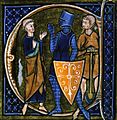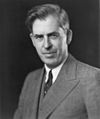Commoners facts for kids
Ordinary people, often called commoners or the masses, are regular members of society who are not part of the nobility (like kings, queens, or dukes) or the priesthood (religious leaders). They are the people without special titles or high ranks in a social class system. Since the 1900s, the term common people is often used to describe typical members of society, especially when comparing them to those who have a lot of wealth or power.
History of Common People
The idea of common people first appeared in ancient Rome around the 6th century BC. Roman society was divided into two main groups: the patricians, who were the nobles, and the plebeians, who were the commoners. This division might have been created to help stop conflicts between different family groups.
The ancient Greeks didn't really have a strong idea of social classes like the Romans. Their main groups were simply non-Greeks, free Greeks, and slaves.
Later, with the rise of Christianity in the 4th century AD, a new way of thinking about social divisions spread across Europe. This idea lasted for a long time, even into early modern history.
Saint Augustine, an important Christian thinker, believed that social divisions came from the Fall of Man (a religious concept). People started to see society as having three main groups:
- The priesthood (the clergy), who "prayed."
- The nobility, who "fought."
- The common people, who "worked."
These three groups were often called oratores (those who prayed), bellatores (those who fought), and laboratores (those who worked) in Latin. These terms have been used since the 9th century and are still found in history books today.
Images for kids
-
A Medieval French manuscript illustration showing the three estates: clergy (oratores), nobles (bellatores), and commoners (laboratores).
-
US Vice President Henry A. Wallace said it was the "century of the common man" in a 1942 speech.
See also
 In Spanish: Masas para niños
In Spanish: Masas para niños



